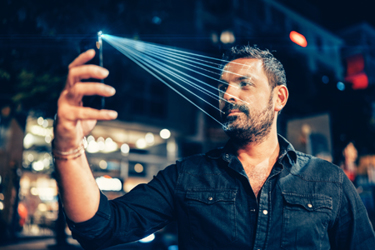Facial Biometrics Are The Future Of Retail
By Vito Fabbrizio, HID Global

The digital transformation now bringing together the physical and virtual worlds is having a major impact on the retail space. The typical consumer expects consistent, seamless, and safe experiences throughout their online, in-store, and mobile shopping journeys. U.S. retailers who keep customers waiting in line can lose up to $100 billion per year.
Customer identities are the key to improving the physical and digital retail experience, making it quick and convenient, personalized to their preferences, safe, secure, and clean. A proven way to accomplish this is through biometric technologies – and especially facial recognition solutions. They can ensure that every customer touchpoint builds a positive relationship through a premium experience.
For instance, facial recognition solutions in the retail space enable shoppers to grab what they need, ring it in at a self-checkout terminal, and complete the transaction just by showing their face. The solutions also can be used to personalize services such as seamless participation in loyalty programs, and they virtually eliminate credit card and identity fraud by accurately identifying customers for every transaction, among other benefits.
Features to look for when choosing a system include Presentation Attack Detection (PAD), or the ability to thwart the use of common biometric “spoofing” tactics like holding up a picture to fool your system into authorizing a sale. A technology like Multispectral Imaging (MSI) enabled camera can be used to perform “liveness detection” by scanning the surface and subsurface of a subject’s face. This technology can be combined with other advanced PAD technologies to immediately detect and reject fakes. Also important is the ability to perform facial recognition in challenging lighting conditions from bright light to complete darkness, which requires imaging technology with adequate light spectrum.
When researching solutions, check the accuracy of their facial matching algorithm. Look for accuracy tests conducted by the National Institute of Standards and Technology (NIST), which is the gold standard in evaluating biometric technologies. Facial recognition matching accuracy and performance have improved dramatically in only a few years -- as of April 2020, the best face identification algorithm has an error rate of just 0.08%, significantly improved from the 4.1% of the leading algorithm in 2014. Many solutions use AI-based matching algorithms that are trained using a very large, ethically-sourced dataset with tens of thousands of images across a wide number of facial characteristics, including “in the wild” images from a photograph dataset designed to address the challenge of unconstrained facial recognition.
No matter how capable the solution is, it cannot be deployed without a privacy-first approach to facial recognition. Key concepts to adopt include:
- Self-sovereign identity – To comply with consent-based regulatory requirements, a customer must be able to opt-in and enroll in the biometric system. By offering an easy-to-use digital onboarding solution, which proves consent by allowing customer enrollment by taking their own selfie and a picture of a government-issued ID. It is also crucial that any customer information database (biometric or otherwise) has customer opt-out mechanisms.
- Anonymous Templates – Personally Identifiable Information (PII) must never be stored – only templates, not actual facial images. The data in the template cannot be reverse-engineered and is not associated with any biographical or contextual information, so if it is compromised, it is a useless piece of code.
- Network-wide Security - Facial recognition systems should encrypt all sensitive data to safeguard it against potential breaches and use secure end-to-end transmission between data points to guard against “man-in-the-middle” attacks.
Retailers can build a better business with facial recognition solutions that give customers a privacy-first, contactless shopping experience while also complying with regulatory privacy and security requirements. The latest technologies offer valuable performance differentiators and employ measures like self-sovereign identity, anonymous templates, and network-wide security to protect customers and their personal information.
To learn more about how facial recognition is revolutionizing the retail shopping experiences, read this HID eBook, The Ultimate Retail Experience Starts With Facial Recognition.
About The Author
Vito Fabbrizio is HID Global’s Managing Director of Biometrics for Extended Access Technologies. He has more than 20 years of experience in high-tech security hardware and software, driving strategic growth and product visibility for both mature and emerging markets. His unique blend of strategic and hands-on tactical skills has generated proven results for partners and customers in the security industry. For more information, go to: https://www.hidglobal.com/solutions/biometric-authentication.
